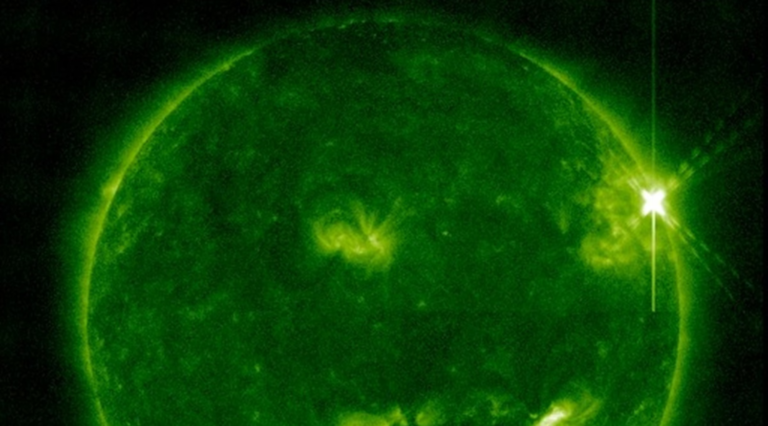Around 8 pm IST on July 3, a significant solar flare was detected by NASA’s Solar Dynamics Observatory. These flares, magnetic storms originating from the sun, unleash energy equivalent to several million hydrogen bombs detonating simultaneously.
During a solar flare event, highly energetic charged particles are expelled from the sun, reaching speeds close to that of light. These particles can disrupt the Earth’s ionosphere, a crucial component for radio communications. On July 3, the US NOAA’s Space Weather Prediction Center reported a notable radio blackout in specific areas around the Atlantic Ocean.

The interaction between radiation, energetic particles, and solar plasma material released during a solar flare with the Earth’s magnetosphere and ionosphere leads to the formation of strong geomagnetic storms. These storms generate powerful currents at ground levels, potentially causing disruptions to electric power grids in high-latitude countries and impacting air traffic along polar routes. Prof. Dibyendu Nandi from the Indian Institutes of Science Education and Research in Kolkata explained that sensitive satellite sensors are also at risk of damage. Additionally, the radiation ionizes the Earth’s upper atmosphere, altering conditions in the ionosphere, crucial for high-frequency radio communications used by defense agencies, airline operators, and emergency services.

The historical consequences of solar flares include a major incident on March 13, 1989, when a substantial portion of the North American power grid failed. Quebec, Canada, experienced a power blackout lasting over 12 hours, with radio signals jammed due to the solar flare. NASA reported that some satellites lost control, and the TDRS-1 communication satellite recorded over 250 anomalies as the flare’s high energy affected its sensitive electronics.








